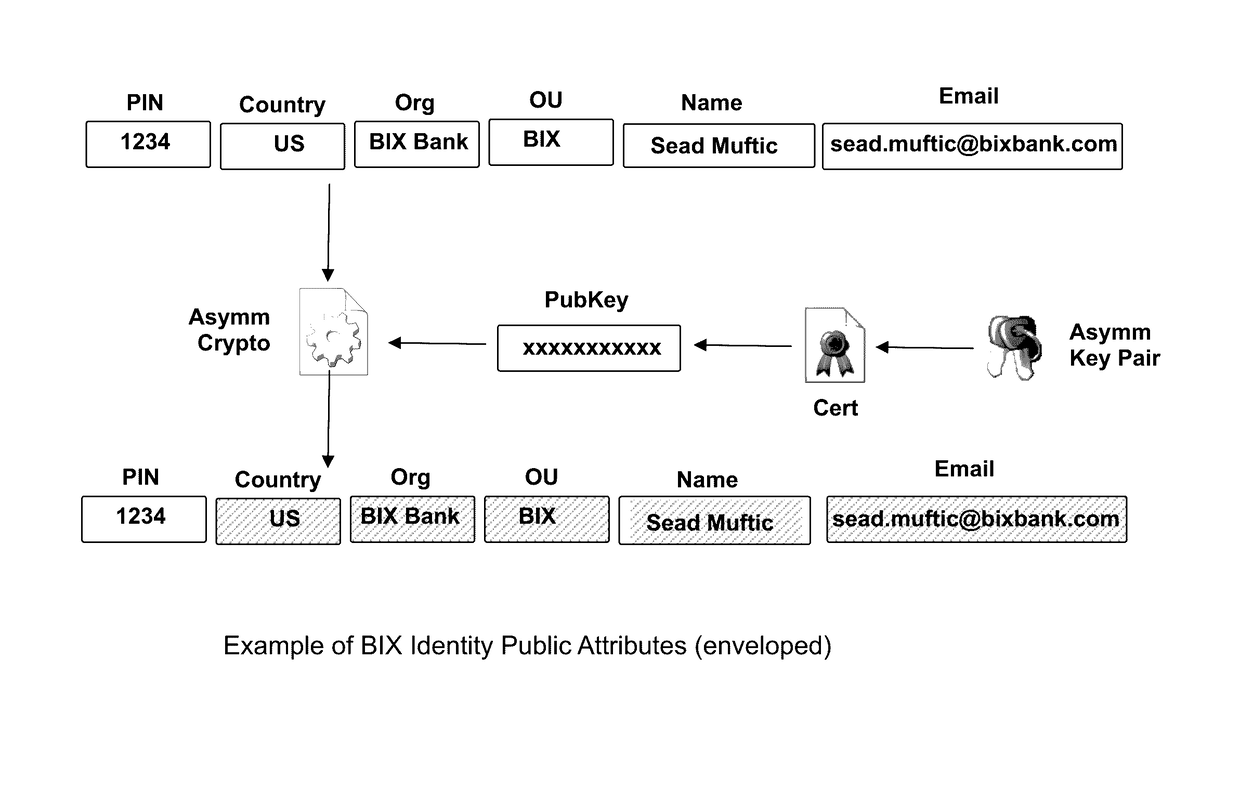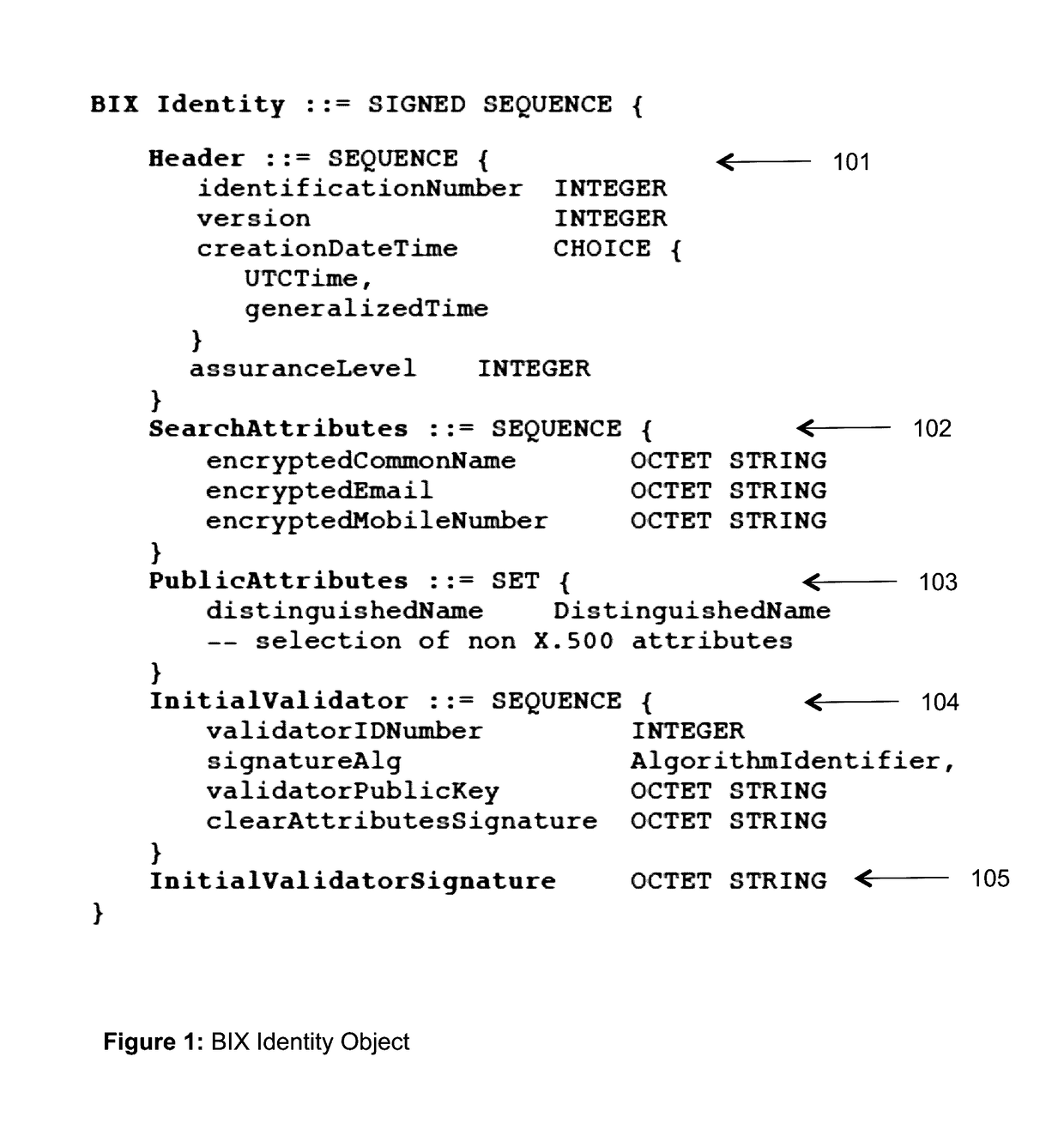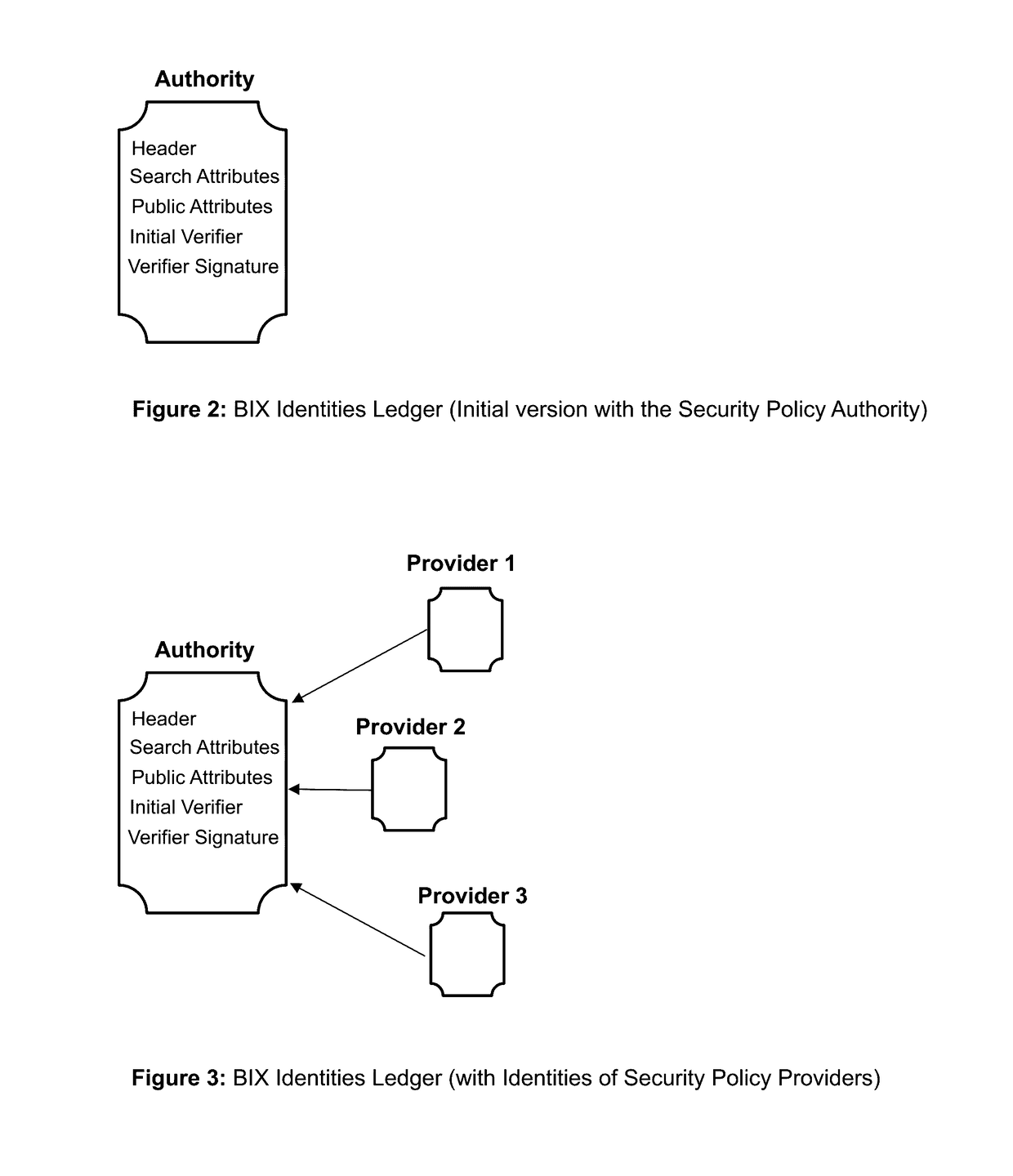Although such solutions correctly perform their core functions,
centralized database servers have, in principle, many serious problems.
In distributed, large-scale environments, the components and protocols for using them—federation—are very complicated.
Because identification data must be protected when transferred outside of the security perimeter, a centralized IDMS is very expensive to establish, maintain, operate, and protect.
In addition to problems due to the
large size and centralized nature of such repositories, trust is required for IDMS functions that are provided by third-party solutions.
All these aspects represent another group of important problems and weaknesses of centralized repositories that store and
handle secret and sensitive user data.
An IDMS that stores users' explicit identifying attributes and their sensitive security credentials cannot provide privacy and
anonymity of users and their transactions.
In addition, at the time of this invention, almost all IT application service providers collect personal and
transaction data and use and share this data in unauthorized ways, without user consent, thus further violating
user privacy and
anonymity.
But, although attractive and interesting, careful analysis of the proposed solutions shows that they are all deficient, contradictory, infeasible, and inadequate; in essence, they do not offer the full functionality of an IDMS.
The main reason for the difficulties in using the Bitcoin
blockchain is that as a
linked list of blocks of
payment transactions, it is not suitable for use with identities.
Another serious limitation is that when Bitcoin addresses, which are public cryptographic keys, are used as the identities of user accounts, they provide only and limited user anonymity and not user identification,
authentication, or
authorization.
The anonymity of user identities is suitable for peer-to-peer
payment transactions using Bitcoin, but not for many other types of applications and transactions, even with other types of virtual currencies.
Bitcoin concept is also vulnerable to the theft of private keys, resulting in direct access to the users' Bitcoin wallets.
Furthermore, at the time of this invention, there are many operational issues when using the Bitcoin
blockchain and its ledger for applications and transactions other than Bitcoin payments.
The size of the blocks is too small, the
throughput of the Bitcoin validation protocol is very low, the validation of blocks has long delays, the Bitcoin network is vulnerable to denial-of-service attacks, the protocol is vulnerable to timing attacks, and dishonest mining procedures and arrangements.
Therefore, all the ideas that suggested using standard concept of the Bitcoin
blockchain and public ledger to manage digital identities do not represent feasible and viable solutions.
Furthermore, careful analysis of all existing solutions reveals that none perform IDMS protocols as pure peer-to-peer transactions; rather, each of them introduces some type of the third-party component that makes them, in essence, equivalent to large IDMS repositories.
One important problem with every IDMS, which solutions based on use of the Bitcoin blockchain and its public ledger did not solve, was binding of digital identities to the real-world entities that they identify.
However, this method of validating identities, merely by the fact that they are included in a blockchain, is misleading because (a) the sources of these identities are unreliable and (b) their validation can be much better and more efficiently performed using original websites.
In fact, the main
weakness of this solution is that there is no personal protection of public data in a blockchain, which means that users still do not have control of the access and use of their data by other users and service providers.
One of the subtle problems of the simple approach of loading hashes of identities into a Bitcoin blockchain is the
verification of the relationship of attribute values to real-world entities.
Identities established without validation, using first-come, first-serve principle, are completely unreliable and therefore cannot be used for serious business applications.
However, this approach is contrary to the very nature of the blockchain approach, as it depends on trusted third parties to validate identities.
Another important conceptual problem with solutions that rely on the Bitcoin concept, network, protocols, and messages is the fact that the Bitcoin system is not truly peer-to-peer system.
Not only must users trust these servers to perform efficiently and correctly their functions, what cannot be formally verified, but the network servers also control the overall system in terms of the difficulty of hashing, the timing of releasing of blocks, block sizes, and payout rewards.
This clearly means that any IDMS that uses the services of the Bitcoin network is itself not reliable and depends on third-party components.
Another serious problem with the Bitcoin blockchain is the
delay in validation of blocks and transactions.
On average, it takes about 10 minutes; furthermore, transactions cannot be considered validated until they appear in the subsequent six / seven most recent blocks.
This
delay makes the use of such protocols completely unacceptable for many applications that need instantaneous validated transactions.
A serious conceptual problem is that there may not be a hash for the block that corresponds to the given target.
Yet another important problem with all solutions that rely on the Bitcoin blockchain is that they do not provide the identification for real-world entities whose identities have been included in the blockchain when making identity claims.
Thus, these attributes cannot be used to recognize a specific entity from the real-world, since it is impossible to reliably relate the attributes with the entity that these attributes describe and that owns the public key.
So, even if the Bitcoin network is only considered to be a distribution network, the proposed solutions do not perform pure peer-to-peer transactions.
However, such a formal approach has no significant advantages.
And third, miners cannot solve the key problem of any IDMS: binding of identity attributes to real-world persons.
 Login to View More
Login to View More  Login to View More
Login to View More 


